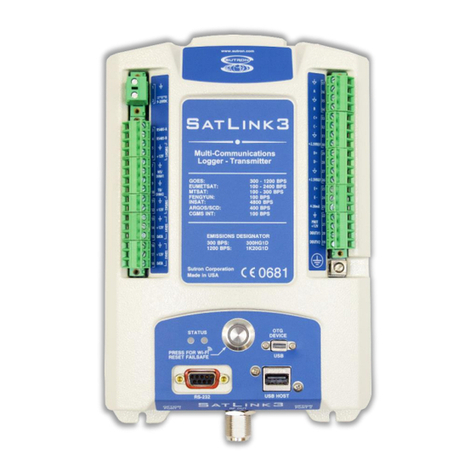
XLINK100/500 Quick Start Guide
Android and Google Play are registered trademarks of Google LLC
Apple, App Store and OS X are trademarks of Apple Inc., registered in the U.S. and other countries.
EN-1 8800-1218 Rev C.
Search terms: Sutron Linkcomm
2. Physical Connection to XLink 100/500
Connecting power:
1. Connect a battery or power source (9 –20 VDC)
across terminals 1 and 2
2. If connecting a solar panel, connect between
terminals 3 and 4 on XLINK500
Connecting to PC:
3. USB - Connect a micro USB cable between PC
and “USB Device” port on XLINK 100/500
4. Wi-Fi –Press the Wi-Fi button on the unit to turn
on XLINK 100/500 hotspot; On the PC, select the
Wi-Fi network from Network Connections.
This quick start guide will show steps on how to
•Install LinkComm software
•Connect XLINK100/500 to a PC
•Connect a Lufft WS400-UMB sensor to XLINK 100/500
•Setup measurement intervals and transmission content
•Setup transmissions to HydrometCloud every 1 hour in MIS format
•Setup alarms to send a message when the temperature goes above 300C and after it falls
below 280C
1. Install LinkCOMM Software
Android™: App is available on
Google Play™
Apple®: download from
Apple App Store®
PC or Mac OS X®: download from
www.sutron.com/product/linkcomm/
Note: For Windows 7, install the
driver from LinkComm menu.
Newer versions of Windows do not
require the driver.
Battery cable shall have an inline fast fuse
to handle current up to 5A




























